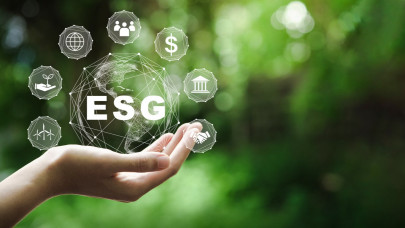Why has circularity become such a megatrend in recent years, and what are the opportunities for businesses to create value through circular economy strategies?
The past few years have had the world facing one of its most intense episodes of “poly-crisis”, with sanitary, then social, economic, and geopolitical challenges overlapping and interacting with each other. While it took all of us, governments, societies, and businesses, a good while to stay afloat, a serious reflection on our goals, our limits, and urgencies has been collectively launched to ensure a safer and more resilient future. Sustainability and environmental balance are arguably our strategic assets for increased prosperity in the long run, and even though the vision of a circular economy, that drastically reduces material consumption and waste had existed for many years, it came back reinforced in the aftermath of these crises. Numbers are depicting an unprecedented urgency: a recent Deloitte study indicates that in the past six years, we have consumed nearly 600 billion tons of materials, which is almost as much as in the entire 20th century, while environmental overshoot has become obvious and none of the resources we rely on are inexhaustible.
“Efficiency” is central to the circular economy model, and our data show that widely implemented circularity can reduce by one-third the current global resource and material consumption by extending the products' lifespan and making sure they enter full life cycles. A key argument for this “circular” scenario is that reduced consumption wouldn't affect the supply, quality, and diversity of goods and essential services, the quality of life, or the social and economic progress. Nothing of what we buy, use, or consume would be affected by the transition, but quite on the contrary — a circular economy makes sure all of those will exist for longer and for more generations to enjoy them. Circularity is also about sharing, reusing, and redirecting resources, so as for them to circulate indefinitely under different forms and shapes. Once implemented and perpetuated on a cross-industry model, a circular economy can come up with obvious financial value, improved access to resources, more robust and trustful supply chains, resilience against resource markets' price fluctuations, as well as business and market sustainability and brand attractivity.
What are the challenges and barriers in transitioning to a circular economy?
Adopting a circular solution to stay prosperous and profitable in the long run seems logical, but transforming mentality, operations and financial sheets is easier said than done. As you rightfully pointed out in the first question, circularity has moved into the mainstream and gained the status of a “megatrend”, but real numbers tell another story: according to our Circularity Gap Report 2024, the percentage of secondary materials used by the world economy has steadily decreased over the past five years, from 9.1 in 2018 to 7.2 in 2023, which means the transition does not keep pace with the increase in consumer demand, and on the other hand, it seems to not have a systemic character yet. Thus, our priority and biggest challenge is to make the circular transformations consistent and efficient and to scale them.
Considering recent crises inherent shortages and supply chain turbulences, the world economy came to underdeliver on many counts, and economic rebound is primarily a matter of increased resource and materials consumption. In this specific context, we need to also consider the costs of the transition for the business operating model (e.g. technological refurbishment, R&D, ecodesign, training, and others) and its competitivity: adding costs that incorporate environmental damages is a sensitive matter in times of crises, competition with often cheaper virgin materials makes the deal seem uneconomic, and there are also significant challenges when it comes to the competitive position of individual companies.
Circularity is a matter of generations, so realignment and redesign of our economic and operational models are key: we need to fix our economics, rethink our policies and models of collaboration, and keep people informed and engaged.
What is the local outlook on circular practices? Are local industries ready to embrace a circular economy?
In recent years, Romania has made significant progress in the legislative field, and starting from 2023, we operate within a strategically set framework, including a National Strategy on Circular Economy and a subsequent Action Plan that provides major directions for the transition. At Deloitte, we consider this to be a turning point for the local market, which has a very modest circularity percentage of 1.4 in both 2021 and 2022, so we put our best effort into answering the “where we are at and what are the prospects” question by running a yearly study among local companies on precisely their perception and the stage of implementation of the circular economy. The first edition in 2023 showed that local companies are pretty well documented on the principles of circular economy, they are up to date with European and national regulations in the field, they work on their own strategies and investment plans, they do benchmark and adopt various measures regarding raw materials, ecodesign or packaging materials and their composition, and of course, they look for financing solution. However, the effort looks still disparate, as only half of the analyzed companies operate systematically these transformations and state that their goal is to change the business model according to circular principles.
“Educating” business and setting the stage for a collective effort on circularity is crucial for moving the needle, and we work daily on assisting clients and market players by sharing knowledge of our global network of member firms, then explaining what circular transition means and what it can bring to each of their specific industries, to each of their specific business models, by helping them redesign products and services, by showing why cross-sector connectivity is important, and how all that can contribute to fostering sustainable and decent livelihoods for employees.
What role can governments, policymakers, and consumers play in promoting a circular economy?
Circularity is indeed about participating in a systemic effort to get a systemic outcome, and although it tackles economic and industrial processes, the circular economy is very people-centric. The world population is expected to exceed 9.5 billion in 2050, and policymakers across the globe are increasingly aware of the need for decoupling prosperity creation from overconsumption. This is of course a matter of strategic planning and continued education, but overall it is even more a matter of mentality, which goes down to people's everyday individual actions and choices. For instance, the local DRS program provides a very good example of how the circular policy can be publicly promoted to gradually become part of people's convictions and habits. At the EU level, efforts are being made to revise legislation while taking into account the principles of the circular economy, for example, the new Packaging and Packaging Waste Regulation, which will be adopted later this year and promotes a circular approach to packaging.
The most environmentally intensive industries — agrifood, construction, and manufacturing — occupy more than three-thirds of the global workforce, which means the transition must be planned and conducted considering labor market aspects as well. Policy designs the rules of the game, which have the power to shape the actions of citizens, businesses, and whole societies alike, while people are key agents and beneficiaries of the circular economy through their lifestyle, professional skills, and consumption patterns. Nationally and internationally aligned policies and implementation tactics will allow us to shift away from a linear economy in a way that works with and for people and fights longstanding social and environmental inequities.












